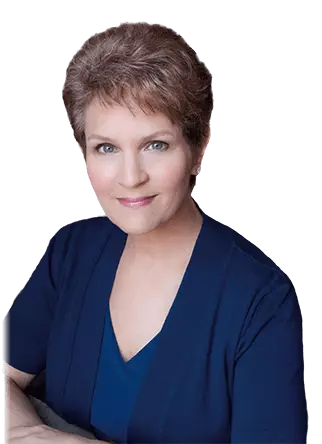My executive coaching client, Myra, struggled with what I call the “Strategy vs. Execution Dilemma.” She was a successful leader, in the running to become a Senior Vice President. She had gotten there by being known for producing, for always making sure that she and her team members were seen as delivering desired outcomes.
At the surface, this would seem like a good thing, right? So, you can imagine Myra’s surprise when, during her performance review, her boss told her point-blank that the promotion she wanted so badly wasn’t going to happen. The reason? Myra wasn’t considered a strategic thinker. Ouch.
Myra immediately reached out to set up a coaching session. As she settled into the chair across from me, she admitted right up front that it was probably true. “Ever since my boss gave me the feedback, I’ve been thinking about what he said … and it’s true. I do typically make sure the team and I are busy doing things, reaching our daily, weekly, and monthly objectives toward delivering our major projects. And that means I do spend the bulk of my time attending to details. That’s been a good way to get where I am. But clearly, it isn’t going to get me to where I want to go.”
After a bit more reflection, Myra shared that this tendency actually went way back. Getting things done efficiently and with excellence was how she impressed teachers as a student in school as well as pretty much every boss she’d ever had. And she had always been rewarded well for her “get it done” behavior, too—earning good grades as a student and collecting raises and promotions once she got into her career. Clearly and consistently, she proved that she was a go-getter and a producer.
But now, that seemingly positive behavior was holding her back. Indeed, while Myra and her team were delivering consistent excellence in execution, she wasn’t doing the strategic work necessary to take her team, her function, and, therefore, the company to the next level.
Given her busy day-to-day world, it had never occurred to Myra that taking time to sit quietly and think strategically was actually what she was being paid to do. But, now it struck her that she was actually only doing part of her job—in short, she was under-performing as a leader by not taking regular time to focus on strategy.
For Myra, thinking strategically would represent a shift. It would take time away from attending to the day-to-day details of her workplace. It would mean sitting still, not visibly “doing” anything except thinking, reflecting, and challenging herself mentally. She had been so busy “doing” all of her life, and the road to success had been paved with accolades related to her level of activity. So, this shift felt incredibly awkward, even “wrong,” “wasteful” and “not productive.” She had fears of people judging her for being lazy.
Can you relate to Myra’s situation? If so, you’re hardly alone. There seems to be an unspoken belief at work that just sitting and thinking is not a justifiable use of time. Some clients have told me that they feel so guilty if they aren’t visibly “doing” something all of the time that they close the door or pull the shades in their office when they need to take time to think. They want to avoid being perceived as “not productive.”
As children, we’re often warned to stop “daydreaming”—both in school and at home. Our parents, teachers, and other authority figures may not have had much respect for staring out the window. Today, even though you are now in a higher-level position, that old conditioning may still be in your head, causing you to feel as though you’re wasting time if you schedule “strategic thinking” in your calendar. But, just like Myra, this belief may be holding you back from future career success.
When this self-awareness surfaced in our discussion, Myra’s initial dismay and frustration turned to excitement as she began to contemplate the possibility of spending more of her time thinking strategically. But she wasn’t sure what that would look like or how to go about doing it.
How to Balance Thinking and Doing
Here’s what I asked Myra to do, and you can try it, too, right now: Grab a piece of paper, draw a circle on it, and let it serve as a pie graph that represents 100% of your time. At the top, title it “Strategy vs. Execution.”
Divide the graph into two pieces—one portion that reflects how much time you currently spend executing tasks and attending to details (execution/doing) and the other that reflects how much time you currently spend on thinking strategically (strategy/thinking). Be honest!
Label this circle “Current.” If you’re like many leaders I’ve worked with, your chart may reveal that you spend anywhere from 80-90% of your time executing, and only about 10-20% strategizing.
Next, underneath the same circle, draw a line, a colon, and another line that looks like this: ____________:____________.
Let this represent the optimal ratio for these two aspects of self-leadership—how you probably should split your time between strategy and execution, given your current position. Is it 60% strategy/40% execution, 50:50, or something else? The best ratio for you will depend upon your organization and the expectations of your position (be sure to keep in mind the position you hope to achieve in the future, too).
Now that you’ve reflected on how much time you should optimally spend on strategy, it’s time to make changes. I’ve found that the only way strategic thinking will “happen” in the middle of a busy week is for you to actually make it happen. How? Well, here’s what Myra did: She started with reserving one hour of strategic thinking per week and increased those hours over time until she had reached her optimal ratio. As a result, her next performance review was much improved, and within a year, she was once again being considered for a Senior Vice President position.
Make a commitment to setting aside strategic thinking time, like Myra did: Shut your door and just think. To start, I suggest you begin with one hour, once or twice a week. Don’t agree to take calls during that reserved time, and don’t be tempted to go to meetings. Just look at either your team, your function, or the entire company (as appropriate, given your position), and reflect on where and how your area of the company gets stuck, how to improve that and move forward, and how the company’s progress and prosperity might change for the better as a result. Don’t think about any details at this stage—only strategy. Decide that you’ll set aside at least that much time every week, no matter what.
That’s how great self-leaders achieve a positive balance of thinking and doing. So, how does YOUR ratio look right now when it comes to strategy vs. execution?

LEADING YOU™
The most important driver of overall success is your own self-leadership. How you lead yourself directly impacts your ability to lead others, and that, in turn, can prevent you from reaching your full potential.
Discover the power of SELF-LEADERSHIP to build your executive brand and drive career success.

 Brenda Bence is sought after across six continents as a Certified Executive Leadership Coach, internationally recognized branding expert, and the author of 11 award-winning books on leadership, coaching, and branding. A Global Certified Speaking Professional, Brenda is in demand as a top-rated motivational speaker, engaging audiences around the world, both in-person and virtually.
Brenda Bence is sought after across six continents as a Certified Executive Leadership Coach, internationally recognized branding expert, and the author of 11 award-winning books on leadership, coaching, and branding. A Global Certified Speaking Professional, Brenda is in demand as a top-rated motivational speaker, engaging audiences around the world, both in-person and virtually.